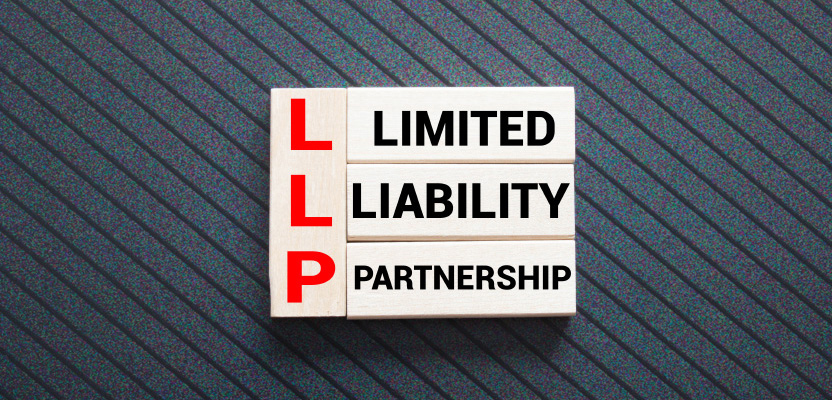When starting a business with partners, choosing the right legal structure is crucial. Two common options are Limited Liability Partnerships (LLPs) and General Partnerships. While both involve multiple owners working together, they have significant differences that can impact your business operations, personal liability, and long-term success.
Understanding the differences between LLPs and General Partnerships
In this blog, we’ll explore the differences between an LLP and a General Partnership, and provide a guide on how to convert a General Partnership to an LLP, outlining the benefits and process involved.
Understanding LLPs and General Partnerships
What is a General Partnership?
A General Partnership is a business structure where two or more individuals (partners) agree to share the business's profits, losses, and management responsibilities.
In this structure, all partners have unlimited liability, meaning they are personally liable for the debts and obligations of the business. Each partner has the right to participate in the management of the business, and decisions are often made collectively.
Key Features of a General Partnership:
- Unlimited Liability: Each partner is personally liable for business debts and legal obligations.
- Shared Management: All partners have equal rights in managing the business unless otherwise agreed in a partnership agreement.
- Pass-through Taxation: Business profits and losses are passed directly to the partners, who report them on their personal tax returns.
- No Separate Legal Entity: The partnership is not considered a separate legal entity, so the business and personal assets of the partners are intertwined.
What is a Limited Liability Partnership (LLP)?
A Limited Liability Partnership (LLP), on the other hand, is a legal structure that offers liability protection to its partners. In an LLP, partners are not personally responsible for the business's debts or the actions of other partners, protecting their personal assets.
The LLP is a separate legal entity, which can own property, enter into contracts, and sue or be sued independently from the partners.
Key Features of an LLP:
- Limited Liability: Partners are only liable up to their investment in the business, protecting their personal assets.
- Separate Legal Entity: The LLP has a distinct legal existence, allowing it to operate independently of the partners.
- Flexibility in Management: Partners can choose to participate in management or appoint others to manage the business.
- Pass-through Taxation: Like a General Partnership, LLPs are typically taxed as pass-through entities, avoiding double taxation.
How is an LLP Different from a General Partnership?
While both LLPs and General Partnerships share the benefit of pass-through taxation and flexibility in management, they differ significantly in terms of liability, legal status, and protection for partners.
1. Liability Protection:
- General Partnership: All partners have unlimited personal liability, meaning their personal assets can be used to settle business debts or legal claims.
- LLP: Partners in an LLP enjoy limited liability, meaning their personal assets are protected from business liabilities and the actions of other partners.
2. Legal Status:
- General Partnership: The partnership itself does not have a separate legal status, so the partners are personally responsible for business activities.
- LLP: An LLP is a separate legal entity, capable of owning property, entering into contracts, and being sued independently of the partners.
3. Risk Management:
- General Partnership: The failure or misconduct of one partner affects all partners, as they share the legal and financial consequences.
- LLP: In an LLP, each partner is shielded from the liabilities arising from another partner's actions, reducing the risk to individual partners.
4. Ease of Formation:
- General Partnership: Relatively simple to form, requiring only a partnership agreement or a verbal agreement between partners.
- LLP: More formal, requiring registration with the Corporate Affairs Commission in Nigeria, along with filing certain legal documents.
Converting a General Partnership to an LLP: Benefits and Process
If you’re currently operating a General Partnership and want to reduce your personal liability or formalize the structure of your business, converting to an LLP can offer significant benefits. Let’s explore the advantages of making the switch and the steps involved in the conversion process.
Benefits of Converting to an LLP:
- Limited Liability Protection: Partners’ personal assets are protected from business debts and liabilities, minimizing risk exposure.
- Separate Legal Entity: An LLP's independent legal status enhances the credibility of your business and simplifies transactions with third parties.
- Risk Mitigation: Protects partners from being held liable for the actions or misconduct of other partners.
- Business Continuity: An LLP can continue to exist even if a partner leaves, dies, or changes their role, offering greater continuity and stability than a General Partnership.
- Improved Structure for Growth: As an LLP, the business may be more attractive to investors and potential partners due to the limited liability feature and its formal structure.
Process of Converting from a General Partnership to an LLP:
- Check Legal Requirements:
- In Nigeria, for example, LLPs must be registered with the Corporate Affairs Commission (CAC).
- Draft a Conversion Plan:
- Prepare a detailed plan outlining the conversion process, including changes in partnership roles, liability arrangements, and management responsibilities.
- Draft a New Partnership Agreement:
- Create a new LLP agreement that clearly defines the rights, responsibilities, and liabilities of all partners under the new LLP structure. This agreement should cover capital contributions, profit-sharing, and decision-making processes.
- Register the LLP:
- File the required documents with the CAC, providing necessary details such as the business name, partner details, and the partnership agreement.
- Notify Stakeholders:
- Inform all stakeholders (e.g., clients, suppliers, and creditors) of the conversion. Update your business's contracts, legal documents, and records to reflect the new LLP status.
Potential Challenges in Conversion
- Cost: There are fees associated with forming an LLP and potential costs for legal and accounting advice.
- Increased Compliance: LLPs typically have more ongoing compliance requirements than general partnerships.
- Partner Disagreements: Some partners may be hesitant to change the business structure, requiring careful negotiation.
- Contract Review: Existing contracts may need to be reviewed and potentially updated to reflect the new business structure.
Conclusion
Choosing between a General Partnership and an LLP is a significant decision that impacts liability, management, and taxation.
While a General Partnership may offer simplicity and ease of formation, the benefits of limited liability protection and enhanced credibility make an LLP an attractive option for many businesses, especially in professional services.
Transitioning from a General Partnership to an LLP can provide substantial advantages, but it requires careful planning and adherence to legal requirements.



